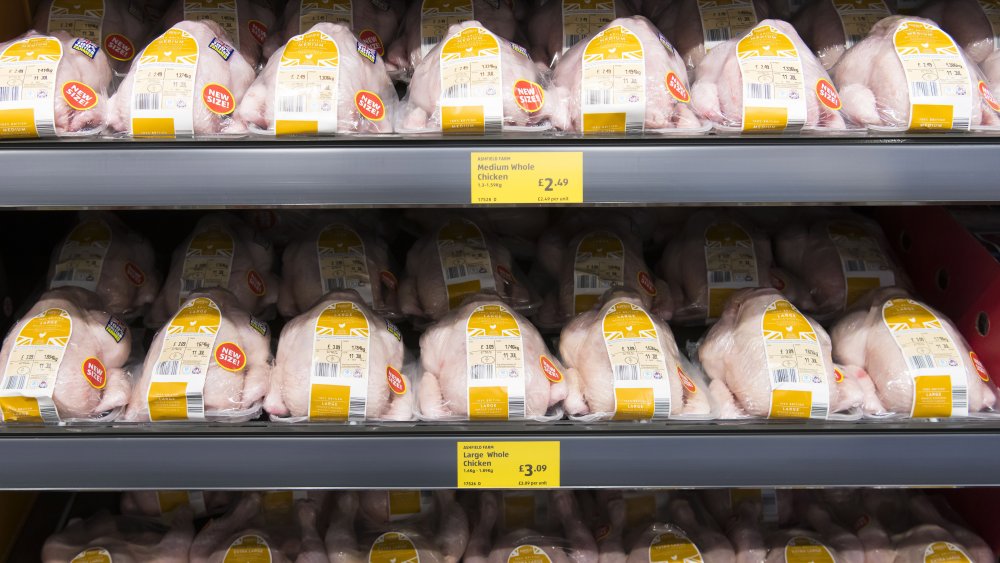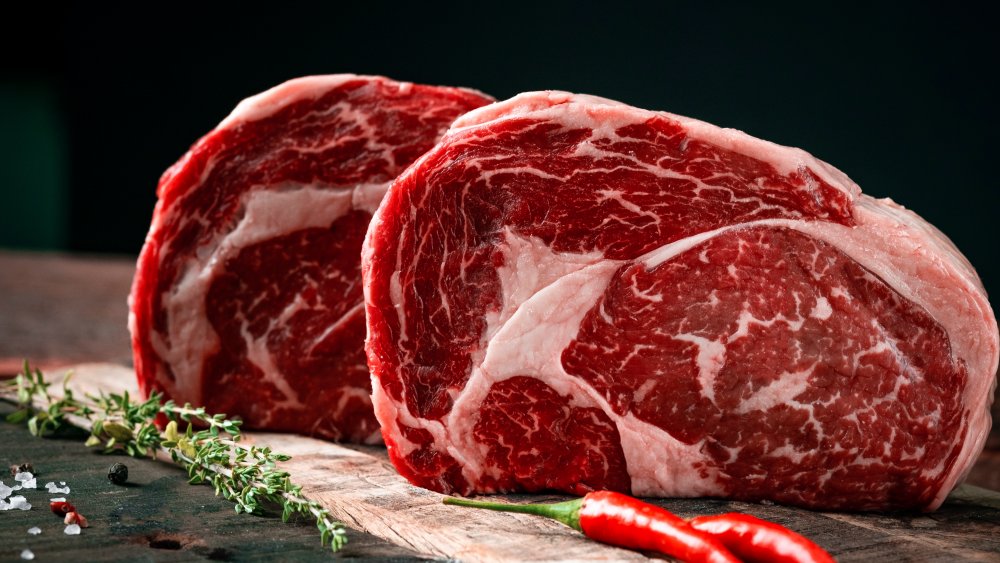The Sneaky Way Grocery Stores Get People To Spend More Money On Meat
If a grocery market's method for profiting depends on you placing much more meat into your cart, obviously their game is to discover ways to make you think you're buying more than what they are necessarily selling. Or, at least, that's the charitable interpretation for why some stores resorted to plumping their poultry. In 2013, The Guardian raised the widespread practice among British supermarkets of pumping water and additives into a chicken. The fluids injected into the birds amounted to a fifth of the final weight, meaning customers were paying 65p, or about $0.84, per kilogram (2.2 pounds) of added water.
The practice happens Stateside as well, as evidenced by Premier Food Group. They state that saltwater is injected into the bird meat. The companies behind this explain that the saltwater keeps the chicken juicier for a longer period of time and brings out even more flavor – presumably salt. Yet, as Premier Food Group then points out, the ingredients added can account for 15 to 30 percent of the bird's weight and, by extension, its price – and, of course, all the added sodium you consume by eating poultry treated in this way. As gross as plumping is, The Los Angeles Times informed us in 2010 that it had become common practice in poultry farming and in the meat industry in general, infusing its methods in about a third of all beef Americans ate. Perhaps, as the paper suggests, plumped foodstuffs should be labeled as such.
Making customers see red
Of course, labeling can also be deployed for the purpose of getting you to spend money as well. In 2010, the American Meat Institute, the oldest and largest meat and poultry industry representative in the US, felt the need to issue an informational pamphlet about the industry's use of carbon monoxide. While carbon monoxide is harmful to breathe in large quantities, its safer commercial purpose is to keep meats, like steak, red.
This practice came to light in 2007 when ABC News covered how the company Kalsec was fighting against its usage: "They [Kalsec] say consumers — who consider color when picking meat — will be fooled into buying spoiled or old meat and not smell trouble until they open the package at home." While a meat institute representative called the outcry over carbon monoxide "alarmist," it seems the real issue was that Kelsec suspected that a supermarket might get you to buy more of its meat products by altering their appearance and best-by dates.
The American Meat Institute obviously denied this, stating that all altered meat products bear a defined use-by date. However, as Smithsonian Magazine says, the food manufacturers themselves label their foods. But since these dates are invented, theoretically, nothing would stop a producer from selling older meat that looks fresher. Amid the controversy, a number of grocery chains, including Giant and Safeway, declared that they would no longer use carbon monoxide (via ABC News). But if you're worried, you should go to a butcher.

